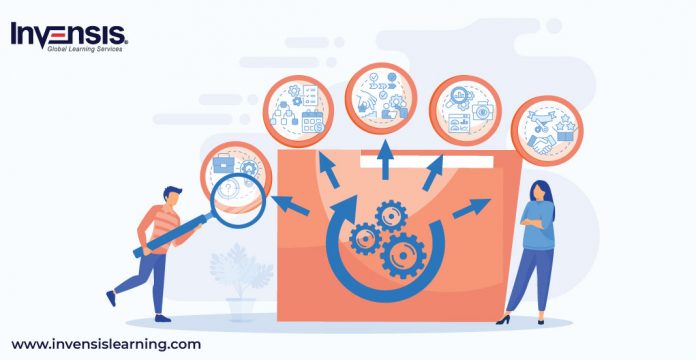
Software development is one of the complex processes that necessitate exceptional project management abilities. Therefore, the high-level view of the project management phases is one of the best tools for harnessing its power for building software concepts. Thus, knowing more about the combination of software and project management is essential.
So, in this article, we will provide useful tips for understanding how software project management practices and phases optimize release cycles and help bring cutting-edge software to market quickly.
What is Software Project Management?
Research says that over 38,084 software project managers are currently employed in the United States.
The art and discipline of planning and supervising software projects is known as software project management!
The Project Management Institute explains “project management” as applying knowledge, skills, tools, and techniques to various activities to meet specific project requirements.
Software Project Management, a subset of the project management certification, is the practice of planning and delivering software development projects within variable timeframes. It is a sub-concept of software project management that involves project planning, implementation, monitoring, and control.
Software project management is used to plan, schedule, allocate resources, execute, track, and deliver software and web projects. Project management in software engineering differs from traditional project management because the software has a distinct life cycle process that necessitates multiple rounds of testing, updating, and customer feedback.
Importance of Software Project Management
For some organizations, project management can be a significant expense. Still, when software projects involve numerous stakeholders, tasks, and teams and the results impact customers, the benefits easily outweigh the risks. By streamlining operations, a project manager can reduce overall costs. A project manager can easily keep a project on track and within budget, but more importantly, they can foster relationships between internal stakeholders and clients, improving communication and project visibility. They can also reduce risks that hurt an organization and the number of issues burdening software development teams.
Software project management also assists project managers in overcoming these complexities by encouraging end-user and stakeholder participation, managing risks, and creating an environment conducive to open communication. These capabilities assist you in setting realistic project goals, accurately estimating resource requirements, reporting on project status, and dealing with commercial pressures. To combat chaos and complexity, software project management provides strategic alignment, leadership, planning, practicality, quality assurance, and proven processes.
Software Project Management Phases
Many organizations believe that any Project Manager’s job is to schedule status meetings and remind everyone about deadlines. But this is only one part of the story. Software project management is a science, and professionals who play this role can benefit from various methodologies, frameworks, and approaches.
Indeed, successful software project managers have a thorough understanding of the six phases of software project management and know how to carry them out. They are as follows:
- Initiation
- Project Scoping
- Managing Requirements of Resources
- Complete Project Deliverables
- Introducing the Product
- Project Completion
Let us talk about them now:
Phase 1: Initiation
This phase signifies the start of the project. Its major purpose is to define the project at a high level.
Typically, phase 1 begins with a business case. The objective here is to ensure that the project is viable and should be executed. If a company does feasibility testing, now is the optimal time to do it.
During this phase, all important project stakeholders will evaluate the business case and determine whether to proceed with the project. If everyone agrees to begin the project, the project charter, also known as the project initiation document, must be created (PID).
Phase 2: Project Scoping
IT organizations identify the requirements, product features, risks, constraints, and scope of the development project during the first phase of software project management.
Your team will devise a strategy to meet the budget while supporting the end-technical products and business case. The following tasks will be defined in this plan:
- Planning & budgeting
- Requirements engineering
- Defining the software process
Phase 3: Managing Requirements of Resources
The third phase of software project management deals directly with the development process. Ensure that the development process follows the established requirements and user expectations and that schedules and expectations are met. In this phase, you may also give project-supporting workers any required training, education, and support.
Phase 4: Complete Project Deliverables
This is the stage at which the team creates and completes project deliverables. This phase is the heart of every project and contains many activities such as meetings, status reports, development updates, and performance reports.
Typically, this phase is preceded by a kickoff meeting in which all software project teams are informed of their responsibilities. The Software Project Manager must develop the team, assign resources, and carry out the project management plan during this phase.
The Software Project Manager’s role here is to direct and manage project execution by establishing tracking systems, assigning tasks, holding status meetings, updating the project schedule, and modifying plans.
Phase 5: Introducing the Product
In this phase of software project management, all technical and business requirements for the final product will be validated.
You will complete the required artifacts, and the development team must prepare for the subsequent software development cycle iteration. Apply the lessons learned from the initial iteration to facilitate continuous improvement. Depending on the SDLC process you employ, you may release particular feature updates, components, or the entire product to end-users. Many organizations use dedicated software project management to make all of this easier.
Phase 6: Project Completion
The final phase represents the project’s completion. The Software Project Manager will acknowledge team members’ efforts. Project managers frequently organize a work event to thank everyone who participated in the project for their efforts.
When the project is finished, Project Managers hold a meeting. This is known as a “postmortem” to evaluate what went well and identify the most serious failures. This type of lessons learned meeting is extremely beneficial to organizations because it allows for the improvement of future projects.
Software Project Management Best Practices
Have you ever wondered what the best project management practices are when developing software with your team? Or, what does a great manager need to do to ensure that their software products are delivered perfectly on time, within scope, and within budget?
To know these, you must know the tips and best practices. We have identified the best software project management practices. Let’s go over these sections now!
1. Utilize the Proper Development Process
Because of the nature of modern software projects, a spiral-based development process is necessary. A spiral process has multiple phases that gradually reduce project risk. Each phase concludes with a yes or no decision. For example, prototyping is used in the early stages to investigate new technologies for the team or a user interface.
2. Track Progress, Implement Software Life-cycle Methodology, and Create a Detailed Project Plan
SDLC (Software Development Life Cycle) is considered one of the best software project management practices. This process is used in software development projects to provide high-quality software.
SDLC consists of six major steps: planning, defining requirements, designing the product architecture, building/developing software, testing, and finally, deployment. These phases help you in implementing projects easily. However, if you want your project to be executed flawlessly, you must create a detailed project management plan template.
3. Quality Control
First, let me clarify. Quality assurance (QA) in IT projects is more than just testing. Of course, it includes testing, but it also includes much more.
Consider the terms verification and ‘validation.’ Verification involves reviewing requirements documents, technical specifications, designs, test plans, cases, and program code. Validation is used to determine whether the software meets the project requirements. An IT project QA must cover both.
4. Continuous Software Testing
There are two approaches to software testing:
Black-box testing (or functionality testing) and white-box testing (or implementation testing).
Black-box testing seeks to confirm whether input and output match without regard for the code’s structure. On the other hand, white-box testing examines how functionality is implemented to improve code.
Testing is mandatory at all stages of a software project to detect hidden errors and avoid failure.
There are three different levels of software testing. The operation and efficiency of each unit are the focus of unit testing. Integration testing determines whether these units match smoothly. And system testing demonstrates how the final software works and its functionality.
5. Use “Leading-Edge” Technology
Many Fortune 500 companies have used mature technologies for software projects that have significantly impacted how they do business. In some cases, cutting-edge technology is necessary to gain a distinct advantage over the competition. However, such a strategy has risks; in this case, having excellent people on the project is even more important. Because few people have this experience, it is critical to seek outside assistance.
Conclusion
Finding a great idea, team productivity, and project management are all important factors in project success. Giving a little direction to tackle a new project yields the best ideas. When teams work hard to meet project deadlines, the frustration cycle is always very high. Keeping track of a project is a full-time job in and of itself.
In addition, as a software project manager, you must see the big picture of every project, and you may have struggled to manage tasks to meet the needs of a project. One way of understanding these aspects in detail is to get certified. Invensis Learning provides you with the best industry-standard project management-related course. So, check out our website and upskill today on PMP Training and Certification.
















